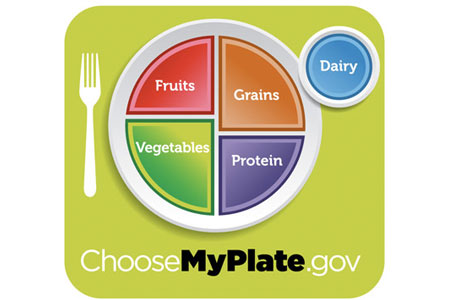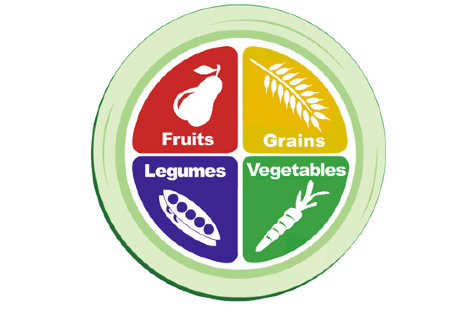As you probably know by now, the United States Department of Agriculture has retired the food pyramid and introduced MyPlate, which has caused quite a stir in health and wellness circles. The outgoing food pyramid has been around for ages but was deemed too complicated to understand (in the opinion of Agriculture Secretary Tom Vilsack). So we now have a pie plate to guide our nutritional choices:

In my opinion, a departure from the food pyramid is a good thing because the previous imagery used by the USDA gave the misconception that a diet with a foundation in carbohydrates (any carbohydrates: cereal, muffins, bagels, etc.) was a healthy approach…

MyPlate still suggests eating carbohydrates but now has more of an emphasis on whole grains. In addition, the total area representing grain-based food (on the plate) is significantly less than the pyramid.
It should be noted however that carbohydrates are hardly eliminated in the new USDA model. In fact, there is still an arguably large amount of carbohydrates on the plate via fruits and vegetables. It is assumed the rest of MyPlate accounts for protein requirements (apparently there is no room for fats, oils, or sweets anymore | just kidding).
The USDA has built the sub-site ChooseMyPlate to help encourage and educate parents and individuals on quality food sources and MyPlate in general. One admirable aspect of ChooseMyPlate that I like is it gives families ideas of healthy, yet economical dietary choices for those struggling to make the right decisions on a budget.
So the basic paradigm shift is that the food pyramid was founded on the premise that one should consume more of what was at the bottom (of the triangle) and eating less of those things found at the top. In contrast to MyPlate, the pyramid appeared to have more choice. However, the idea behind the design of MyPlate is to provide a simplistic and direct connection to the food we eat. At a rudimentary level, this makes sense.
I commend Michelle Obama’s Let’s Move initiative to a healthier lifestyle. To the degree that people had difficulty understanding the former food symbol, I think we are moving in the right direction.
As with all good science, it is important to continue the debate, there are those that believe mixing and matching food groups with nutrients will confuse consumers… and of course, different industry players and experts which might be affected by the promotion of MyPlate have their own opinions about the government’s efforts. There are also people that have conflicting ideologies about food intake, like Paleolithic diet proponents, or the PCRM with their vegetarian Power Plate.

So does all of this guarantee a healthier America? No. I am not a dietitian, but portion control is a no-brainer when addressing weight management. As such, it is not surprising that dietitians are perplexed by the lack of emphasis on portion control. However, in my opinion, as a behavior change model MyPlate is moving us in the right direction… it is more usable, a little more fun and will be much more helpful to children than its triangular predecessor.
